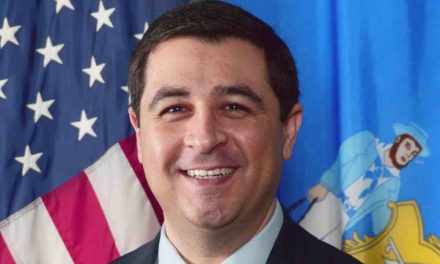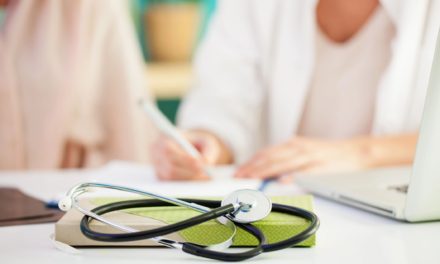
healthTIDE seeks to start conversations in neighborhoods with new obesity map
This week, University of Wisconsin researchers released a map breaking down the prevalence of obesity at a ZIP Code level. Developing the map involved feedback from a Wisconsin network that seeks to improve nutrition and increase physical activity.
“Local conversation starts around the concept that place matters,” said Amy Meinen, director of healthTIDE. “We’re hoping that it drives these sort of conversations and relationships and partnership-building within each of these neighborhoods and communities.”
The healthTIDE network, supported by the Wisconsin Partnership Program, has around 1,700 partners from across Wisconsin. The network serves as a convener for initiatives in the state, with a leadership council comprised of local health department officials, healthcare providers and others.
Meinen and Rob Fontella, healthTIDE’s communications manager, recently spoke to Wisconsin Health News about the map and network. Edited excerpts from the interviews are below.
WHN: What are the main takeaways from this map?
Rob Fontella: Change happens at the local level. That’s where people are activated. That’s where they make the biggest difference in bringing about policy, systems and environmental change. And so this is really something that meets the needs of our community partners, our statewide partners, statewide agencies. It’s something that they’ve been asking for and it fits that need. So there’s a really incredible alignment and overlap there around place, around being local, about bringing about local change to those change makers and health champions…Everyone has scarce resources, and we all need to figure out what parts of our communities are most vulnerable, and this really gives us that insight, so people can concentrate in the areas that can be most impacted by change.
Amy Meinen: If you look at the baseline ZIP Code level information, you can start to map economic development, you can start to map access to parks, farmers’ markets. What’s interesting when you start to look at those pictures, it becomes more clear that place matters in terms of your health. And so I see the healthTIDE network and all the partners that are involved in this work really coming together around place and starting to think through what we can do together in terms of making sure our environments are healthier, that our communities that surround us are healthier. That’s what I think is the next step of this: community-level, neighborhood-level conversations to really understand what people living in those places think and what they think are maybe some of the solutions and then working together to align what we can with what they need.
WHN: What role did healthTIDE play in development?
RF: Starting in 2015, we queried our network. We queried all of our stakeholders at healthTIDE, and it was out of that survey that it began to shape what the Wisconsin Health Atlas would become broadly and then the obesity map specifically. And then again in 2017, we queried our partners and they continue to shape what the actual website will look like, what the data, data engine and how you would interact with it and use it would be. And so very recently, even just prior to the launch, we were working with stakeholders all across the state through the healthTIDE network to make sure that it was usable and even more importantly to make sure that the context, the way that this was framed, would lift up communities and not make them feel ashamed about anything would lift up communities and not make them feel ashamed about anything, but instead focus on action we can take, like increasing access to fresh, healthy food and making sure there are safe places to play and be active.
WHN: How did healthTIDE come together?
AM: The goal of healthTIDE is to really think about how to help support work all over the state so that our communities are healthier. The idea behind it is to create more opportunities for nutrition and physical activity. So it’s the idea of thinking about where a person lives, where they work, where they worship, where they learn, where they shop, all these different environments that a person moves through in a day. And do they actually have healthier options available to them that are affordable? Are they equitable? So there’s all of these kinds of things. Part of healthTIDE’s evolution over the last few years has been that we’ve been really trying to fill the need of more coordination and more communication.
WHN: Could you give some examples of that?
AM: We recently found out in a community that there were two different organizations and people, champions if you will, that were trying to figure out how to get healthier foods into our food banks and our food pantries. They didn’t know each other at all. They didn’t realize that they were working in similar counties. We recently realized that they were doing very similar things and we connected them to each other. The cool thing about that is now they’re talking and they’re trying to figure out how they can make an even bigger impact together. They’re talking about sharing a truck or looking at storage space so they can take in more food and distribute it efficiently. So there’s all kinds of conversations that are happening.
Another example is collective action. We have all these partners who have come together to talk about our schools and how can we create healthier environments so that students have access to healthier foods and to have more opportunities, before, during and after the day, to be physically active. So this group has been meeting. It’s all of the different partners with different perspectives. They’re able to kind of decide a couple of key strategies that they’re going to move together. So really, in healthTIDE, you can come in and get information and take it back to your community or to your organization to help you create change or you can come in and work collectively with others to move things.
WHN: What are healthTIDE’s priorities going forward?
AM: Our goal is to continue to bring more voices into the network. So one of our major goals is really thinking about how to increase our engagement with people who are not thriving or communities that are not thriving, so that their opinions and voices can be representative in the healthTIDE work. Another future goal of ours is really continuing to connect as many people, partners and organizations as possible because we’re finding that as people learn about each other and have an opportunity to learn, for example, what’s happening up in Ashland and Bayfield may be of interest to people living in Adams County. Growing that network of connections and people is something that we’re continuing to really focus on because of the impacts that we’re seeing in really making those connections and building those relationships. And then, this goal of healthier communities is a long-term target of ours.
This article first appeared in the Wisconsin Health News daily email newsletter. Sign up for your free trial here.





